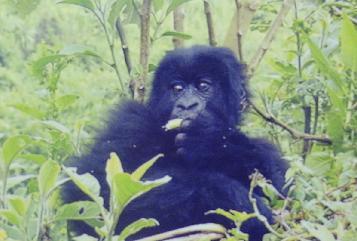 Wow! Believe it or not, this site turns one year old today! In the past 12 months, I've posted nearly 340 news items about the endangered animals of Last Chance To See by Douglas Adams and Mark Carwardine. One way or another, Mountain Gorillas, Northern White Rhino, Kakapo Parrots, Baiji Dolphins, Komodo Dragons and all the others have been crossing my thoughts nearly every day. Some of the news was good, some bad, but all have helped to bring our understanding of these endangered animals up-to-date.
Wow! Believe it or not, this site turns one year old today! In the past 12 months, I've posted nearly 340 news items about the endangered animals of Last Chance To See by Douglas Adams and Mark Carwardine. One way or another, Mountain Gorillas, Northern White Rhino, Kakapo Parrots, Baiji Dolphins, Komodo Dragons and all the others have been crossing my thoughts nearly every day. Some of the news was good, some bad, but all have helped to bring our understanding of these endangered animals up-to-date. We've seen four new Kakapo chicks hatched and returned to Codfish Island, bringing the total number of Kakapos up to 87. There's been plenty of other baby news among which we've heard about a baby Aye-Aye lemur at London Zoo, and baby Mountain Gorillas.
Rather more tragically, we've heard that Mark Carwardine believes the Baiji Dolphin is extinct already, and the Northern White Rhino is also teetering on the very brink of extinction.
I'd like to thank everyone who has supported, linked to, or contributed to this site, especially our regulars like Dave Haddock and Harold. I'd also like to thank our gorilla sponsors, who helped raise the $50 to adopt Urwibutso, the three year old Mountain Gorilla from The Dian Fossey Gorilla Fund.

Thank you everyone. And thanks Douglas!